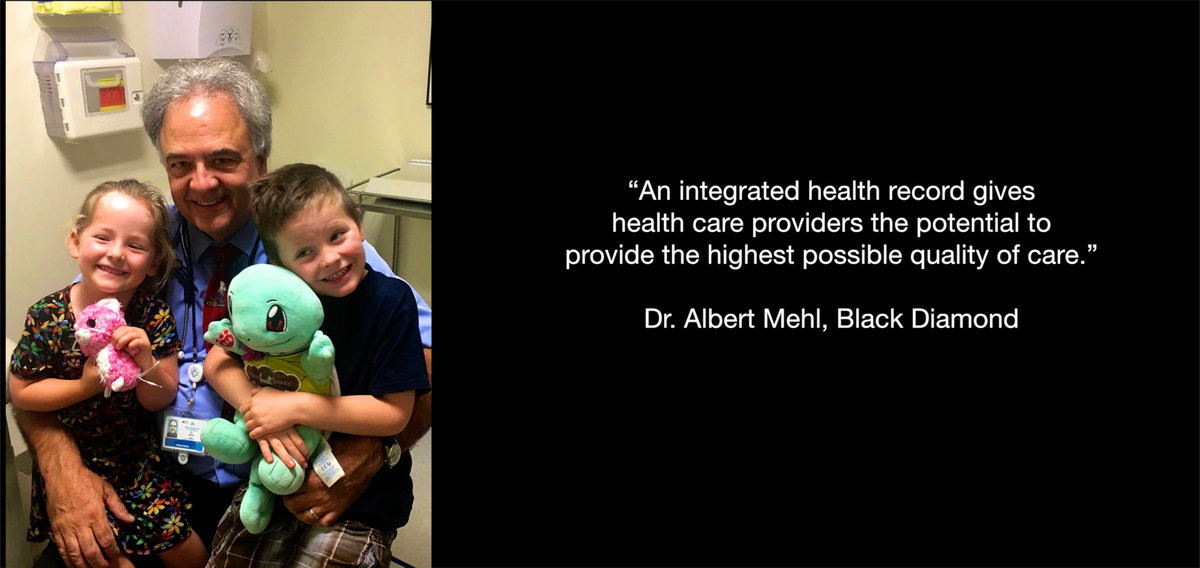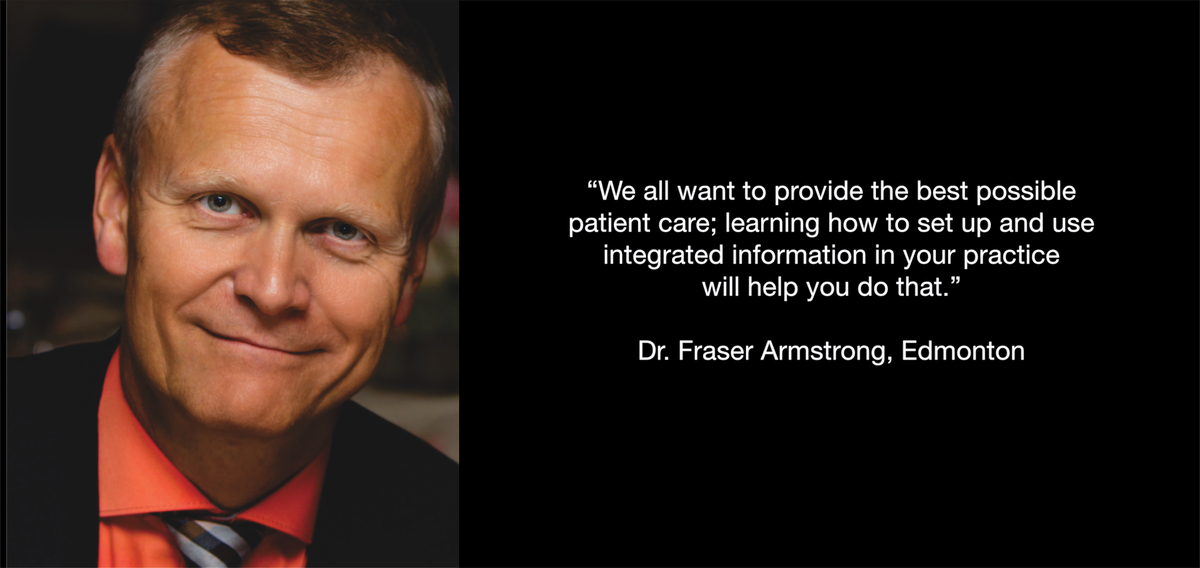One patient, one record. While Alberta is not completely there yet, we are moving into an environment with enhanced information through integration. Community Information Integration (CII) and Connect Care will soon roll out to physicians across the province, and both will put more information at physicians’ fingertips.
Community Information Integration (CII) is a system that transfers select patient information between community electronic medical records and other members of the patient’s care team through Alberta Netcare, including community specialist consultation reports and specific information from the primary care chart. Connect Care is the Alberta Health Services (AHS) provincial care transformation initiative. It is powered by a common provincial clinical information system that will replace most of the more than 1,300 existing systems across AHS.

Dr. Al Mehl is a retired pediatrician who practiced with Kaiser Permanente in Colorado before moving to Black Diamond, Alberta. Although the health system in the US is different, the need for an integrated patient record is the same. For the last 13 years, his practice group’s electronic health record included data from hospitals, specialists, outpatient clinics and physician offices.
“An integrated health record gives health care providers the potential to provide the highest possible quality of care,” explains Dr. Mehl. “I say potential because it has to be used properly. We had limitations with paper charts, but there can also be limitations with too much information. You don’t want the volume of information available to become a barrier to good patient care.”
That’s where upfront preparation and education about the new systems are critical. Dr. Fraser Armstrong, a family physician practicing in Edmonton, has been using a shared health record system for several years.
“It’s important to take time to learn about and customize your system, so you get exactly the information you need and can use it to your advantage,” says Dr. Armstrong. “My best advice to physicians is to invest some time exploring what the system provides and how you can use it to provide better patient care in your specific working environment.”
What does integrated information allow physicians and other health care providers to do?
Dr. Armstrong and Dr. Mehl agree that access to integrated information can improve patient safety through better continuity of care and a more accurate record of past care. For example, patients can’t always remember the names of medications they took in the past. Or they may not recall all the medications they were prescribed after a stay in hospital. Or they may be not be able to tell the emergency room physician about allergies or past medical histories and problems. It’s helpful – sometimes essential – that a physician have access to this information.

Physicians with access to integrated health information can see all the treatments and tests a patient has had from multiple providers, which provides better data and reduces the need for repeat investigations. A physician will be able to see a timeline of a patient’s journey through the health system to diagnose or manage health concerns. Access to a complete history will allow a physician to more easily review why they saw a specific outcome with a patient. Could some of these tasks be done without integrated information? Perhaps, but certainly not as easily.
Dr. Armstrong appreciates how efficient it is to connect with specialists on his network, especially for a quick back and forth about patients before they arrive in the specialist’s office. More than once, the ability for the specialist to see what tests have or have not been done has saved time for the patient and the specialist. Dr. Mehl notes that as a pediatrician, he found it useful to be able to pull up data trends, such as the last five days of a lab result or a child’s growth charts.
Both physicians believe that the move to more fully integrated systems is well worth the time and energy that will be needed to implement and optimize them. Their best advice to physicians is to figure out how to make the systems work in each individual practice.
“The move to integrated information is coming. Don’t resist it,” says Dr. Mehl. “Take your time in adjusting to it and figure out what features will benefit your particular practice. Where can it save you time and energy?”
“Focus on the advantages and benefits of the journey,” says Dr. Armstrong. “We all want to provide the best possible patient care; learning how to set up and use integrated information in your practice will help you do that.”
Remember, the move from paper charts to electronic medical records required time and effort, but EMRs are now giving physicians and other health care providers better and more up-to-date information about patients. In time, integrated information systems will provide a more comprehensive view of a patient’s health, which will help physicians make more informed care decisions.

